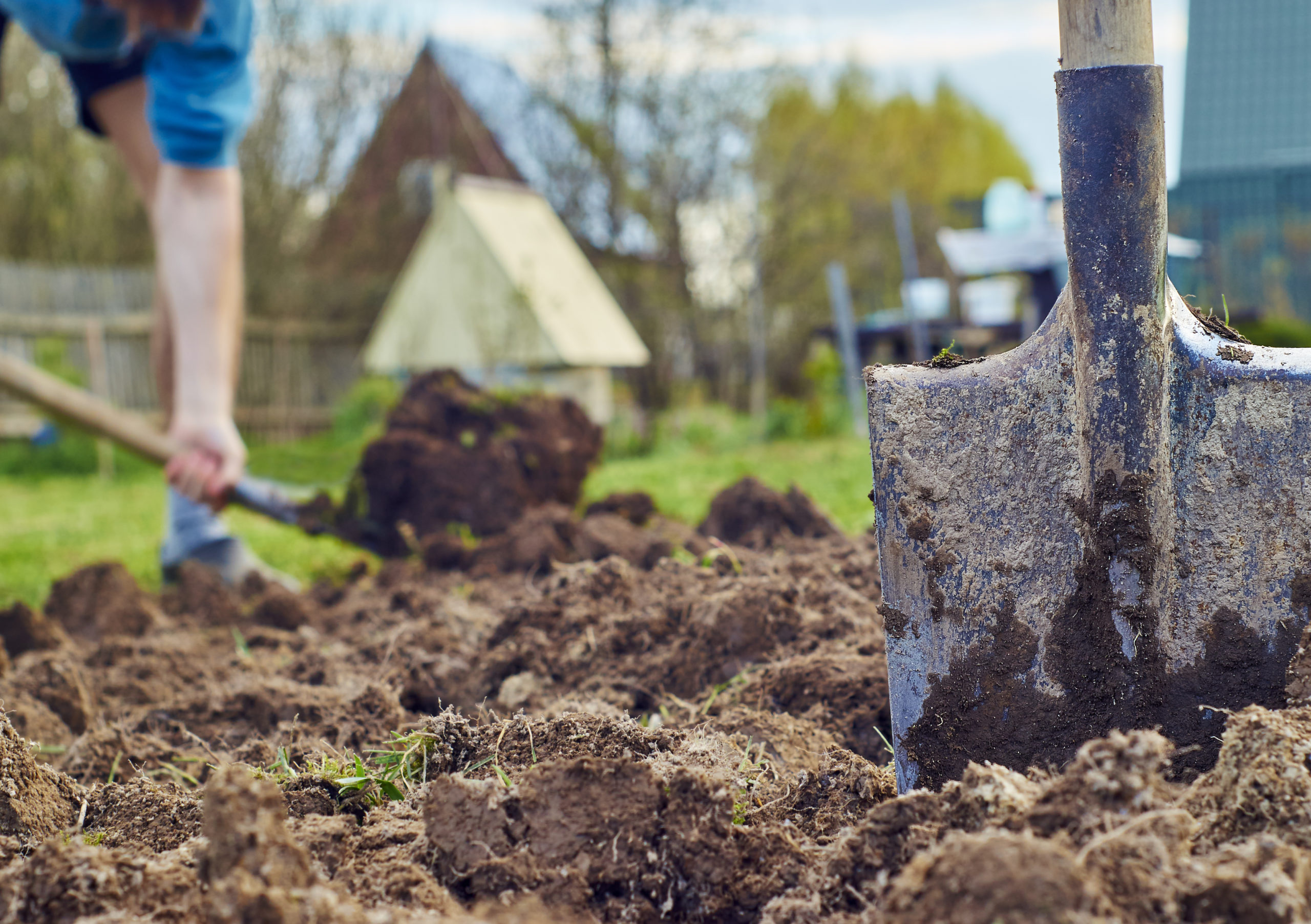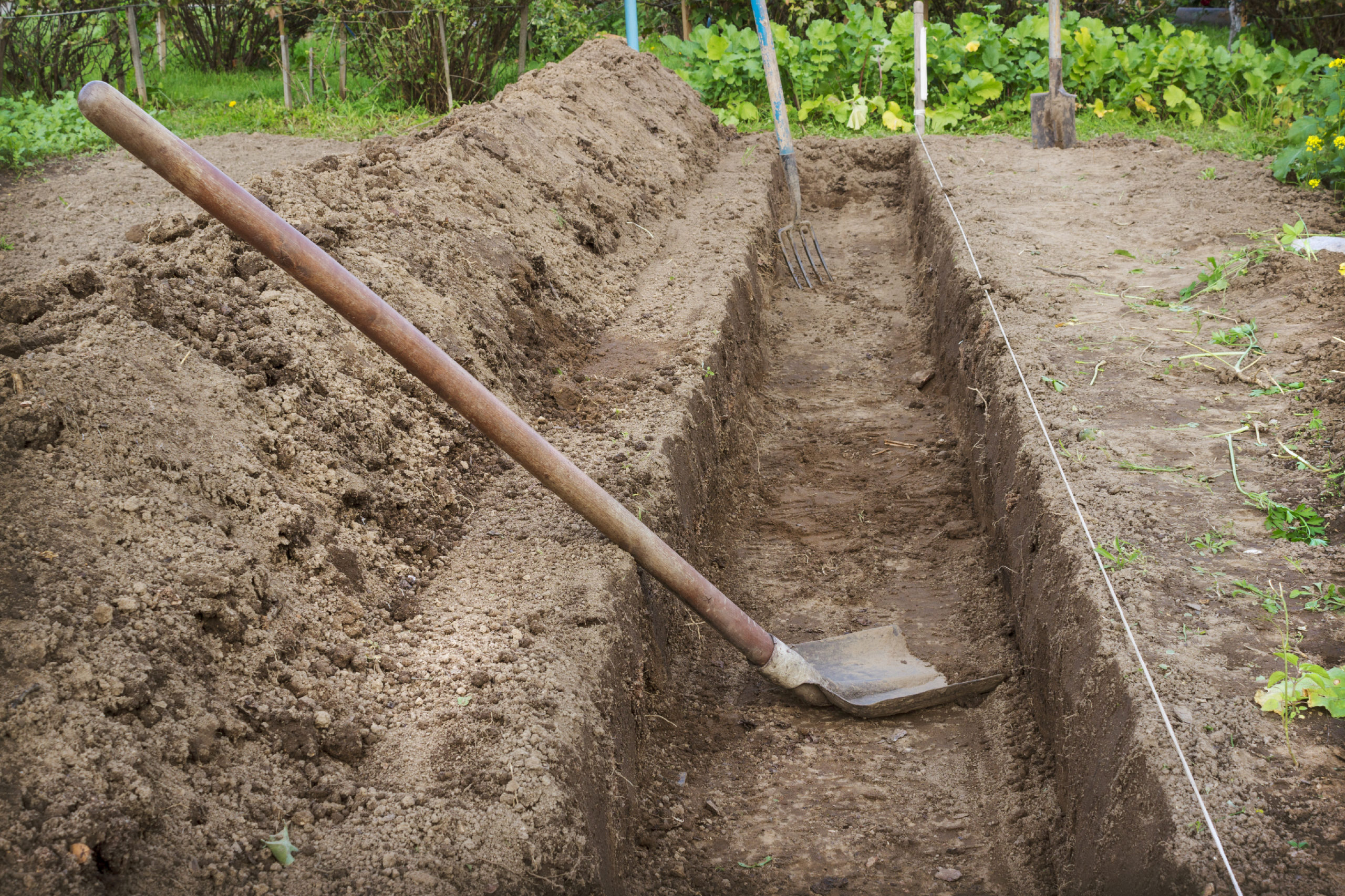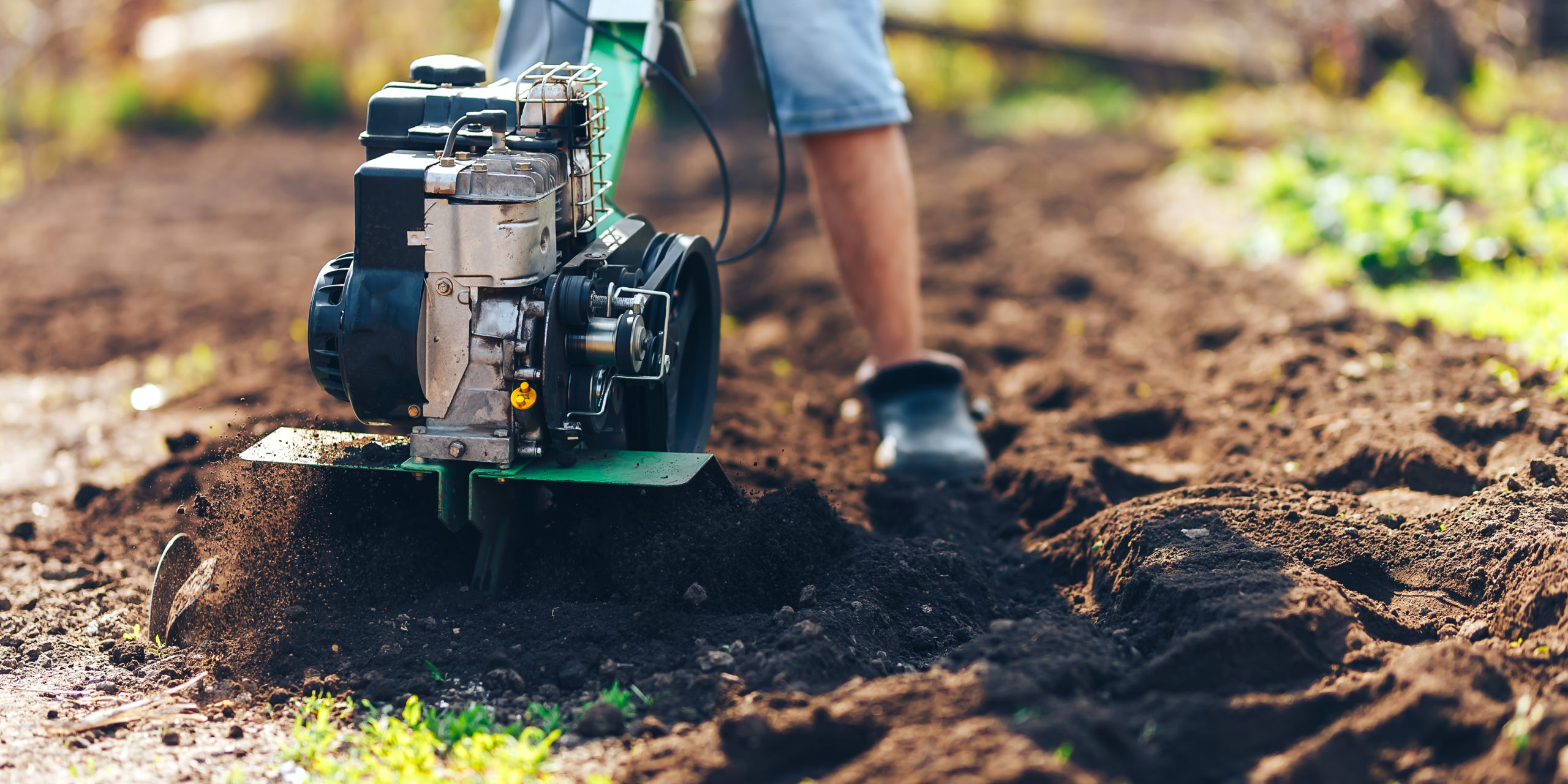Planning for New Vegetable Gardens: Decompact Soil Quickly

GardenZeus receives commissions for purchases made through links in this post. There is no additional cost to you.
Planning for New Vegetable Gardens: Part 7: Decompact Soil Quickly
Compacted soils are hard on gardeners and harmful to plants. Planting in compacted soils almost guarantees plant problems and little or no yield. Do you need to loosen your soil quickly? This article explains how.
This is the 7th in a series of articles offering advice and solutions for common challenges when starting a garden in California. See below for links to other articles in the series.
Home gardening is one of the safest and most-rewarding activities during the COVID-19 pandemic. For other helpful articles, see our blog page Dig In.
Why is Soil Compaction a Problem?
- Dense, impenetrable soil is difficult to work with and hard on the gardener. It requires much greater physical effort to dig planting holes or even shallow furrows for planting seeds.
- Plant roots may be unable to penetrate dense soils, so plants become shallow-rooted and grow slowly. Poor or shallow root systems mean reduced access to water and nutrients, which may cause ongoing stress. Plants may wilt, become unable to grow, or die quickly during hot weather because roots aren’t deep enough to access the water necessary to keep them alive. Stressed and unhealthy plants become more prone to pests and diseases.
- Compacted soils may limit or prevent gas exchanges between soil and atmosphere, and may limit oxygen within soil. We think of plants as taking in carbon dioxide and releasing oxygen, but plant roots need oxygen to survive. When compacted soils are wet or water pools at the soil surface, oxygen available to plant roots and microbes becomes even more limited.
- Water infiltrates slowly into compacted soils, and tends to run off and evaporate.
- Lack of pore space in compacted soils limits habitat for microbes. Without sufficient competition from good bacteria and fungi, it may become easier for harmful microbes to infect plants.
- Where there is hardpan, or an especially dense layer of soil below the surface, water may pool beneath the soil. The surface of soil may appear dry but be wet at a layer of hardpan or other obstruction lower in soil. In some cases there may be swampy areas several inches to a foot or more beneath what appears to be dry soil. Wet soil may rapidly become anaerobic, which means that oxygen becomes depleted. Beneficial microbes quickly die, and anaerobic microbes produce alcohols and other toxins that may harm or kill plants.
Compacted Soil is Life or Death For Plants
- Almost without exception it’s best to loosen soils before starting a new garden. GardenZeus recommends doing whatever is necessary to loosen soils to a depth of at least 12 to 16 inches when starting a new garden, and thereafter use gentler methods such as single digging.
- When you need to loosen soil quickly, the only option is mechanical, meaning that you physically break up the soil with hand tools or machines.
Contact DigAlert First!
- California law requires that you contact DigAlert before digging. This allows utility companies and municipal utility services to identify locations of gas lines and other subsoil infrastructure to allow for safe digging. Fines for damaging underground utility lines may be in the tens of thousands of dollars, and gardeners may be liable for repair costs for any public or private utility infrastructure that is damaged. There is also the risk of injury, property damage including fire, or even death when damaging underground utility lines, such as from punctured gas lines or electrocution. See DigAlert.org.
Methods for Rapid Decompaction
- Double digging is a popular method pioneered for biointensive gardening. It involves opening a trench, removing a section of soil down to about 12 inches, then successively moving the top 10 to 12 inches of soil sideways and further loosing a deeper layer of soil, 10 to 12 inches below the upper trench, using a spading fork. Compost is often added at the bottom of the trench and driven lower into soil with the spading fork. It’s an important method for intensive gardening, but is extremely labor intensive.

- Single digging is a useful method for loosening moderately compacted soils. Spread a layer of compost or other organic amendments about 1 to 1.5 inches deep at the surface of soil, then drive a spading fork through the compost and into the soil as deep as possible. Work the spading fork back and forth to loosen soil.
- For severely compacted soils, consider using picks, drop bars, pick-mattocks, and similar manual tools to loosen soil once before planting a garden rather than rototilling. Use caution or avoid using these tools in areas where there may be plant or tree roots, or subsoil infrastructure such as pipes or conduit. Its better to spend whatever time is needed working to loosen soil even if this mud be done progressively over months, rather than putting in a pointless effort with planting seeds and seedlings into compacted soil.
Are You A Serial Tiller?
- Rototilling is a popular option for loosening dense soil, but has drawbacks. Rototiller blades shred the soil, kill worms, and harm other beneficial soil life including fungal filaments called hyphae that may spread throughout soil in delicate strands of several feet or longer and which improve soil structure, break down organic matter, and transport nutrients to plant roots. Rototillers, especially smaller home-garden models, are also sometimes ineffective at loosening severely compacted soils, or may only loosen soil to a few inches.
- Rototiller blades go only so deep, so when rototillers are used regularly, soil is loosened repeatedly to the same level, which can create hardpan directly at the level under the depth of the blades. If you use a rototiller, GardenZeus recommends a single initial tilling in dead soil only.
- Repeated rototilling by definition makes you a serial tiller!
Too Much Work?
- For gardeners who are unwilling or physically unable to break up soil with tools and machines, there are many methods to decompact soil slowly that require much less effort. Unfortunatetly, they take more time. The next article in this series, Decompact Soil Slowly, will describe these methods and explain how to prevent future compaction.
Other articles in this series:
Part 4: Introduction to Soil Toxicity
Part 5: Common Causes of Soil Toxicity
Part 6: Introduction to Soil Compaction
Future installments include:
Part 9: Introduction to Soil Alkalinity
Part 10: Managing Soil Alkalinity
Part 11: Introduction to Soil Fertility
Part 12: Watering
Part 13: Pest and Pet Exclusion
Part 14: Minimizing Pest Insects
GardenZeus has plenty of information to help you get started growing fruits and vegetables. To receive customized growing information for your area, click here.
Articles of interest for novice gardeners include:
How to Choose the Best Seeds for California Gardens
The GardenZeus Guide to Starting Tomato Seeds
Container Gardening: Cucumber, Corn, Snap Peas and Eggplant

